
Before You Binge ‘Rutherford Falls’ Season 2, Meet the Native Artists on the Show
Sierra Teller Ornelas offers an inside look at season two of the binge-worthy show.
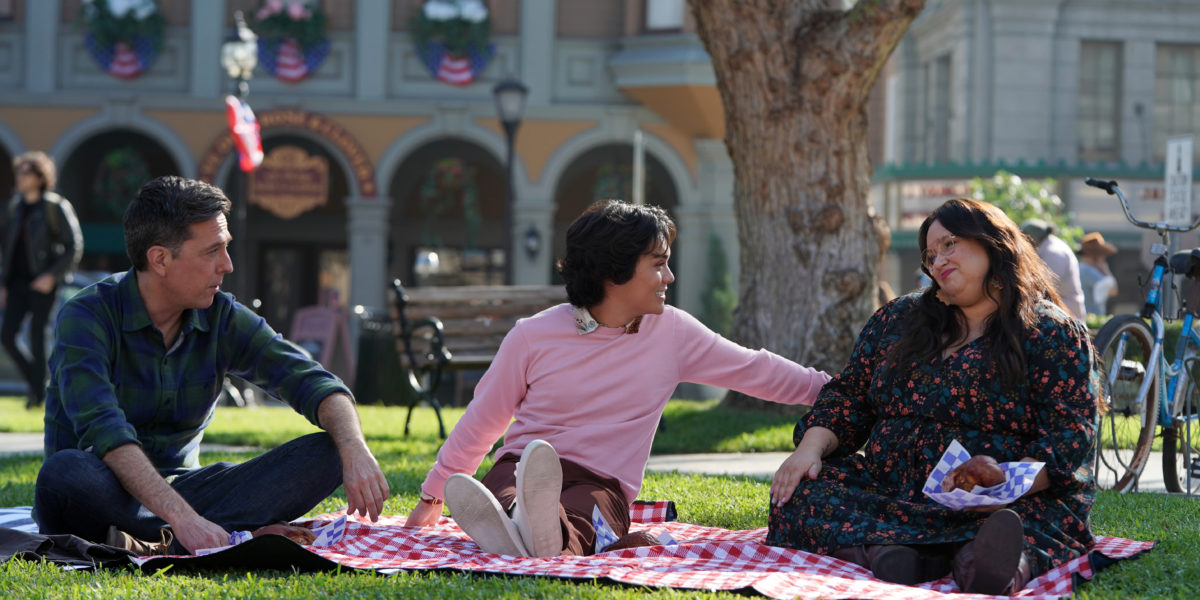
Tyler Golden/Peacock
Sierra Teller Ornelas is ready for Native audiences to “get this.”
By that, she means the opportunity to watch Native characters navigating romance, comedy, work, and more on screen. While filming an episode in the upcoming season of Peacock show Rutherford Falls, which she co-created with Michael Schur and Ed Helms, one of the show’s writers yelled out during a dance scene, “We never get this!”
That became a “rallying cry” throughout the season, Ornelas says.
“We never get to be funny and explore character in their specific situations—Native characters and their specific experiences,” the showrunner adds. “It was really fun to just see where these characters wanted to go.”
It’s a long overdue answer that comes at the hands of one of the largest Indigenous writers’ rooms on television. Rutherford Falls staffs six Native writers including Ornelas, a member of the Navajo Nation who also serves as executive producer and showrunner. The show follows two friends, Reagan Wells (Jana Schmieding) and Nathan Rutherford (Helms), as they make their way through life in a fictional town and neighboring Minishonka reservation.

Tyler Golden/Peacock
The second season, which debuts June 16, will make you laugh, cry, and think. Ornelas says it offered much needed space to explore the show’s characters not just in the context of larger issues—episodes tackle topics ranging from the LANDBACK movement to Robin DiAngelo’s White Fragility—but also each one’s personal journey. “We really work hard to create a world where you often have to hold two things in your hands at the same time,” Ornelas says.
Your favorite character in one episode might become a source of conflict in another, and then the hero of the next, Ornelas adds. By design, Nathan’s character held onto “a path” in season one but finds himself stripped of that hubris in the second season, Ornelas says. “If you’re starting from scratch and and starting to build, what do you want that to look like if you’re not being held back by these expectations of your legacy?”
Art also takes center stage this season as Reagan explores her career dream of leading a museum and the show gets a guest appearance from Portland-born artist Natalie Ball. Ball, who currently serves on the Klamath Tribes Tribal Council, creates work that is “so beautiful and so different and so singular in its vision,” Ornelas says, it was a no-brainer to reach out amid a desire to feature a Native artist this year.
Before you binge season two, we chatted with Ornelas about the romance, the comedy, and the evolution of Rutherford Falls.
The following interview was edited for length and clarity.
Let’s dive right in. Congrats on season two! I giggled and gasped my way through it.
I’m so proud of this season, and I think it’s so funny. Everyone’s just gelled in this really lovely way that happens in the season two shows that I’ve worked on, and I’m just so excited to see it happening here. We really wanted to explore and enjoy the fruits of our labor of season one. I feel like we set up a lot of things, and had a lot of cliffhangers of what’s going to happen to these characters. It was really exciting to have this space to explore each character’s journey in the funniest way possible. And, really, this friendship after this reckoning that’s happened between Nathan and Reagan by the end of season one.
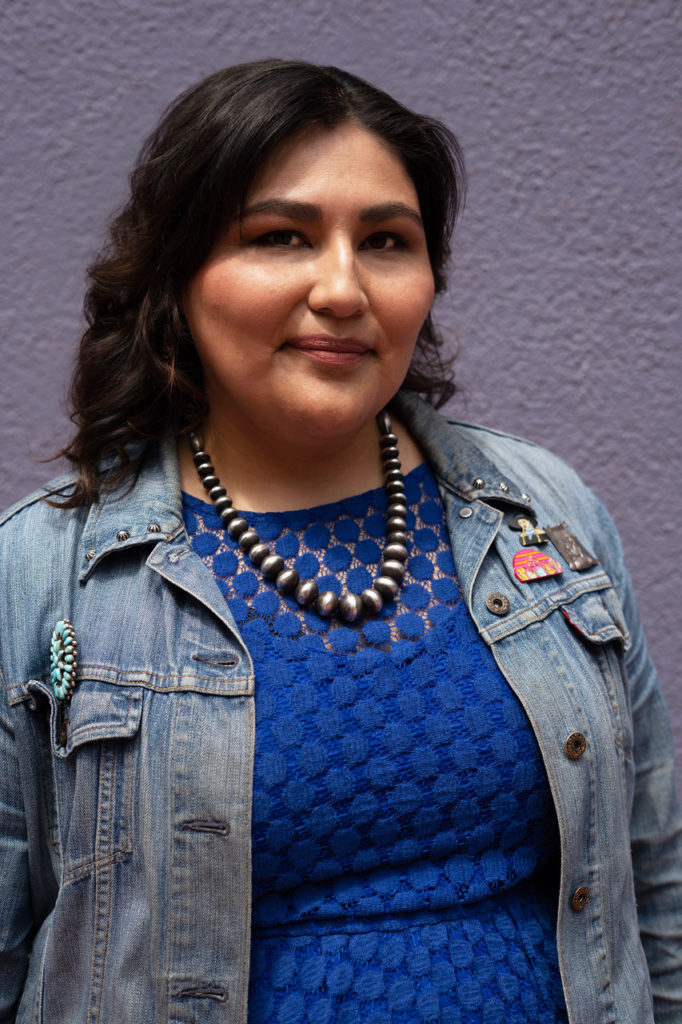
Reginald Cunningham
You’ve previously said season one allowed you to explore questions about American historical narratives and erasure from those narratives. Were there any questions you specifically wanted to explore in season two?
We really didn’t know what the response was going to be from Indian Country as well as mainstream audiences [after season one]. I really felt some responsibility to put every single thing into that season, like who knows what tomorrow’s gonna bring, so let’s put in every idea.
By the end of the season, I was really nervous. Once we got to season two, there was a moment of like, “Oh God, I don’t have anything left in the tank.” I quietly mentioned it to [actor] Michael Greyeyes, who plays Terry Thomas, and he was like, “Well, we as Indigenous people have an infinite amount of stories that we’ve never been able to tell. The last thing I’m worried about is stories.”
That really made me excited and, especially since [Hulu show] Reservation Dogs has come out, feeling a sense of calm in the stories that I wanted to tell. It was less of a scarcity and sort of, “What do I really wanna say about these characters? Where do we want them go? What are the things we never get to see?” So that was a guiding force.
Can you tell us a bit more?
During the pandemic, many of the Native writers had tried to acquire our land—home site leases on our tribal lands—and had dealt with this kind of bureaucracy. We were all discussing it. I was like, “Well, this is an opportunity to talk about that.” What does land back mean? Not just in terms of the larger political issue, which is incredibly important, but also on a personal level. I feel like Native characters, especially, are always symbols for these bigger things, but it was also really great to explore them as actual characters and in their own self and their own journey.
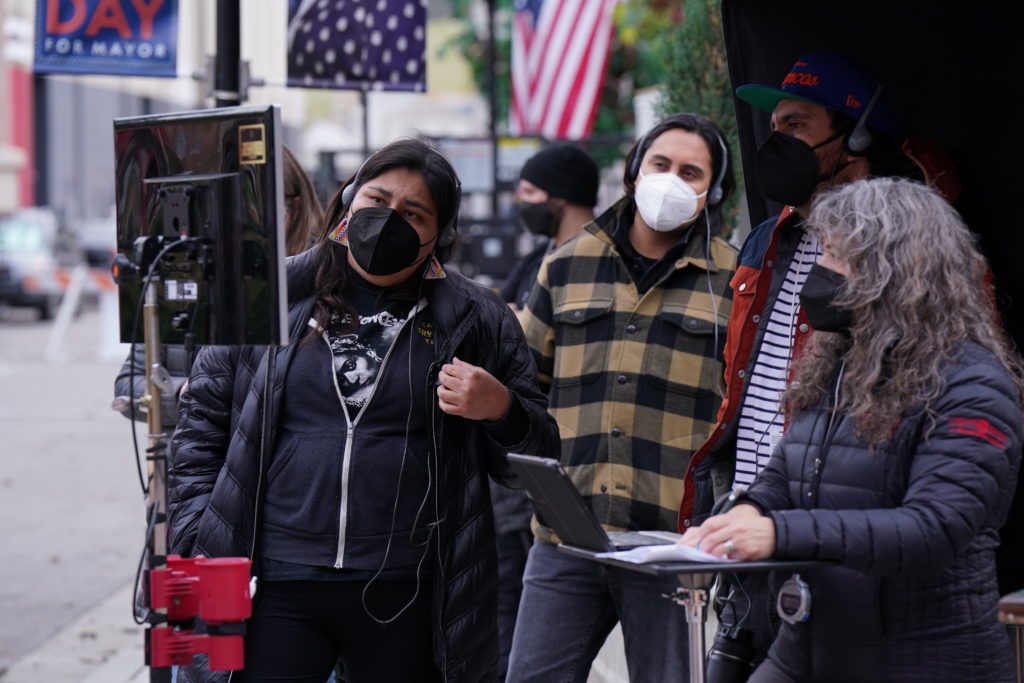
Tyler Golden/Peacock
Watching season two, it felt as if art became its own character on the show.
My mom, she’s a master Navajo tapestry weaver, she’s one of the best in her field. I grew up among Native artists. When you see it on television, it’s usually depicted as tacky. You’ll often see that groovy yoga teacher wearing turquoise. That always bothered me as a child because to me it was high art. I grew up with these incredible craftspeople and true artists.
So, whenever we depict Native art in our show, it was really important to me that it was accurate, that it was shown as an element of our Native excellence. And also that it’s shown as a daily part of our lives, because I think that the jewelry we wear, the t-shirt designers we wear, all of these things, it’s a daily part of our life, but it’s also the way in which we just kind of flex in terms of of our style and our artistry. And it’s always been that way.
We ended up doing a tour at a museum with a curator named Joe Horse Capture. He took us through a bunch of different items, a bunch of different beaded items. There was a pair of moccasins that were beaded on the sole of the shoe. We were asking why, and he was like, “It’s just a flex.” We ended up using a lot of his stories in the show, because it was such a great feeling of pride in our own artwork.
Did your upbringing in Tucson influence any of the plot lines?
We definitely try very hard to honor where the show is set in the Northeast. So, it was a big thing, especially season one, there was very little turquoise, very little iconography from the Southwest. We introduced some of those elements into an episode specifically to underline how our show’s different from other mainstream depictions of Native folks. So, there is weirdly a Southwest element but it’s a little more pointed.
The Native stories on the show are really a reflection of the Native writers on our staff, many are from the Southwest but we have some from the Northeast as well. So, a lot of it is really just us telling stories about our lives.

Tyler Golden/Peacock
As someone living in the Southwest, one piece of dialogue that stood out centered on how many Indigenous communities have utilized controlled burns for forest management. Why did you address that issue?
We added this incredible actor Dallas Goldtooth who is a very funny comedian from [comedy group] The 1491s and [a character called] Spirit in Reservation Dogs. The show depicts a fictional tribe but he is Dakota and he plays a Dakota person on the show. So it was actually a really great opportunity to bring in, the same way we did with the casino conference episode, different Native people from different nations. [His character] is not from the area and is also someone who is highly educated—a little bit of a know-it-all, I think it’s safe to say.
We all have that uncle filled with facts about Native technologies. I grew up with so many things that were Native in my life that were seen as primitive, and when you’re around your own people, there are always members who remind you that they are technologies and they are innovations, and always see them as such.
You’ve spoken before about depicting the complexities of Native experience, and how Native characters on television are typically expected to carry the impossible weight on their shoulders of the entirety of Indian Country and the responsibility of educating everyone. As a show that’s been heralded for its Native representation, do you feel that responsibility?
I feel an obligation to amplify Native voices and to make it easier for the next Native person that makes a television show. That’s really all I can do. I don’t think we can fix everything today but we talk on the show about seven generations: What I’m doing today has an impact for generations that come after. I think all of the Native writers on our show take that very seriously and really consider that what we’re doing is an investment in our collective future as a people, as a culture.
Inside the Art
We asked showrunner Sierra Teller Ornelas for details on a few of the pieces by Native artists that are featured in seasons one and two.
Cody Sanderson (Navajo)
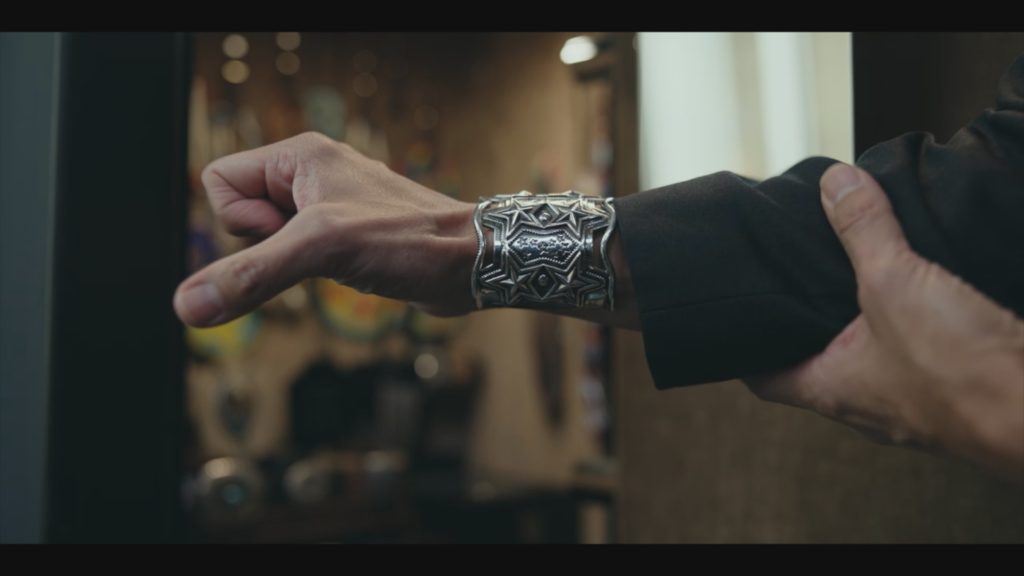
Peacock
“The introduction of Terry Thomas’ jewelry safe, filled with all his ‘power pieces,’ is one of my favorite moments of season one,” Ornelas says. “The artistry of Cody Sanderson’s work is unmatched. I knew I’d made it when I was able to acquire one of his pieces. And it was my bracelet that Terry picked for his big meeting.”
Brodie Sanchez (Shoshone-Bannock)

Peacock
“We feature a lot of Native beadwork on our show, and it was great to showcase Brodie’s work in season two. He’s known for his photorealistic beaded portraits, but I love his use of color in this more abstract piece.”
OXDX (Diné)

Peacock
This is one of Ornelas’ “favorite clothing brands,” the showrunner says.” Not only are the designs beautiful, many have a great sense of humor to them. With COVID numbers going up in the fall, I volunteered to be a background actor and I knew I had to wear one of their shirts.”
Jamie Okuma (Luiseño/Shoshone-Bannock/Wailaki/Okinawan)

“During season one, the Native writers and actors all separately requested including Jamie’s work in the show. When you wear Jamie’s jewelry and clothing, you walk a little taller and feel a lot cooler. She’s at the top of her field and we’re honored to include her work on the show and have her design the season two poster.”
Natalie Ball (Klamath/Modoc)
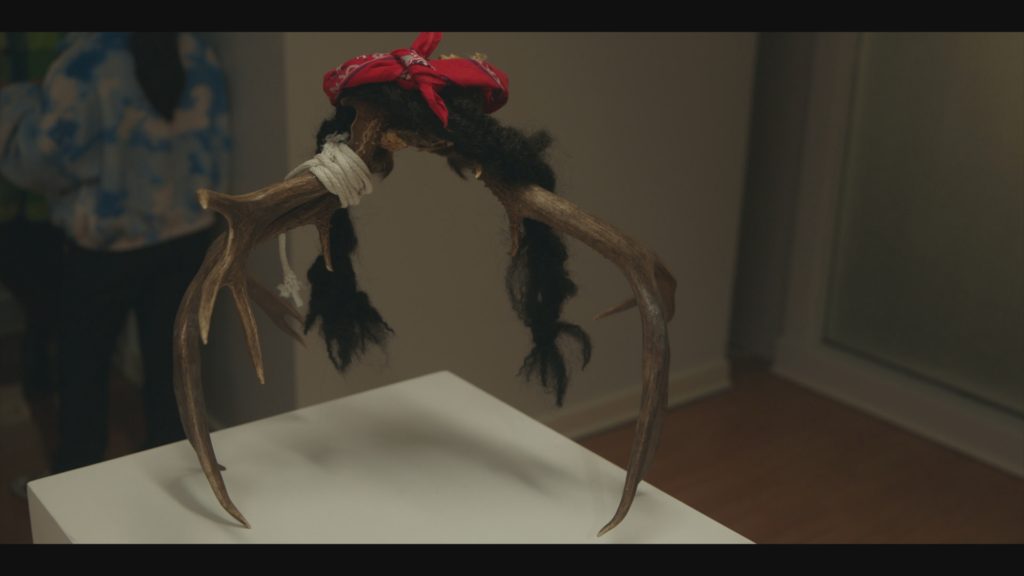
Peacock
“Natalie blows up outdated notions about what Native art can and should be. Her work is vibrant and amazing. It has the ability to feel otherworldly and rooted in one’s kinship at the same time. We were so excited to be able to gather her pieces from various collections to create our own ‘gallery show’” in season two, Ornelas says.
